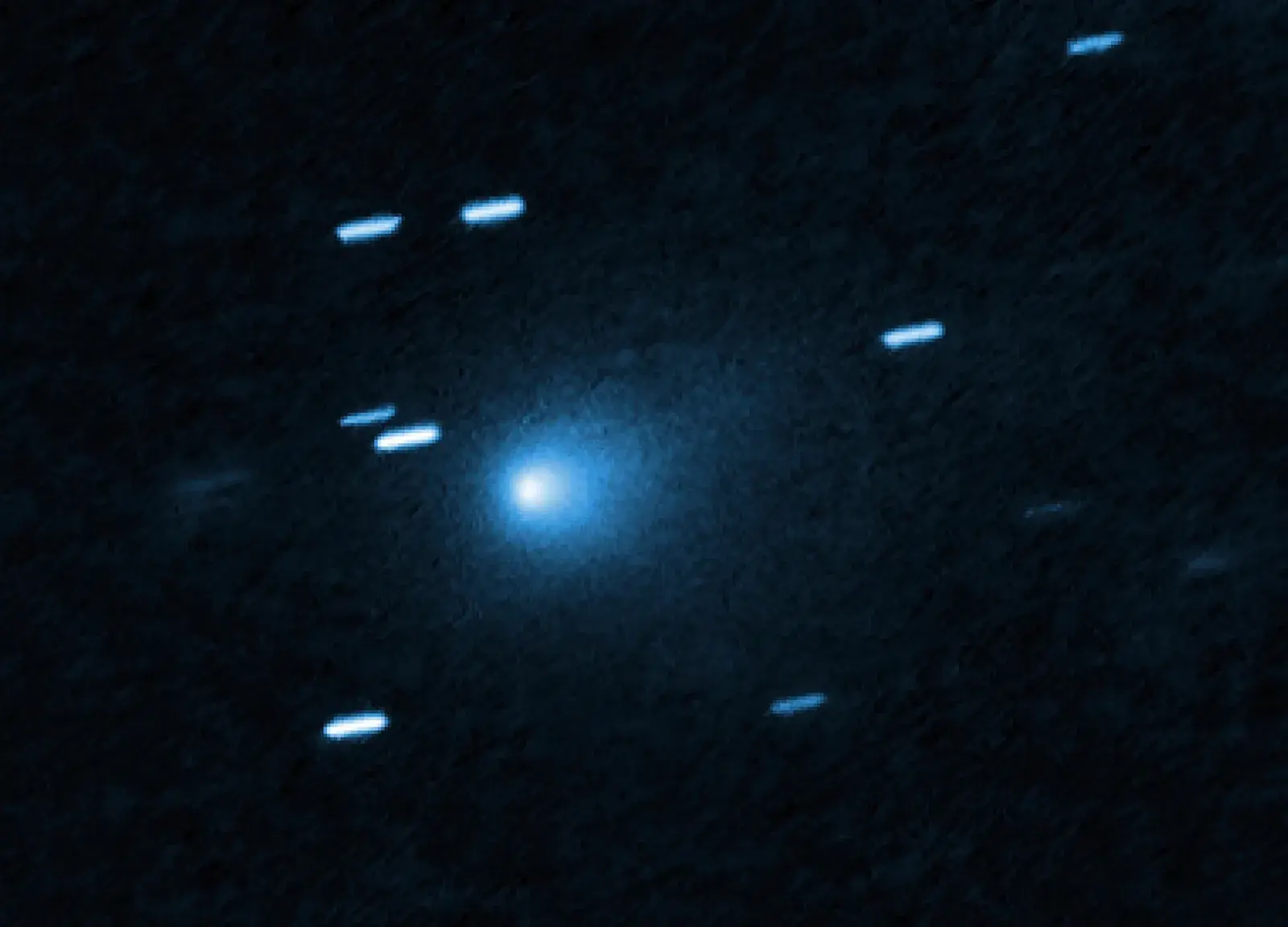-
Alabama’s Kalen DeBoer Makes Clear Case for CFP After Loss to Georgia - 26 mins ago
-
How Australia’s Social Media Ban for Children Will Work - 32 mins ago
-
BYU Publicly Calls Out Kirk Herbstreit Over CFP Statement - about 1 hour ago
-
Social worker stabbed in attack at San Francisco General Hospital dies - about 1 hour ago
-
Everyone Wants High-Quality Clothes. That’s Become Its Own Trend. - about 1 hour ago
-
Ohio State HC Ryan Day Reveals One Regret From Loss to Indiana - 2 hours ago
-
Australia’s Social Media Ban for Under-16s Is Coming. The Teenagers Are Skeptical. - 2 hours ago
-
Diego Pavia’s Heisman Odds Surge After Julian Sayin, Fernando Mendoza Stumbles - 2 hours ago
-
Judge Halts Justice Dept. Effort to Seek New Comey Indictment - 3 hours ago
-
Former Alabama Players Say Crimson Tide Shouldn’t Make Playoff - 3 hours ago
Interstellar object could be mysterious ‘Wow!’ signal source—astronomer %%page%% %%sep%% %%sitename%%
The mystery behind the famous 1977 “Wow!” signal has gained renewed attention after a Harvard astronomer proposed that the newly observed interstellar object 3I/ATLAS may be linked to the event.
The Wow! signal, captured on August 15, 1977, by Ohio State University’s Big Ear radio telescope, has long fascinated scientists as a potential indicator of extraterrestrial intelligence.
Astronomer Avi Loeb argued in a September blog that the signal, which has not been spotted in the 48 years since it was discovered, could have been coming from 3I/ATLAS—an interstellar object first spotted on July 1 by the Asteroid Terrestrial-impact Last Alert System (ATLAS) telescope in Río Hurtado, Chile.
Newsweek has contacted NASA for comment via email.
Why It Matters
“Its direction on the sky was separated by merely 9 degrees from those of the Wow! signal,” he added. “The chance of two random directions in the sky being aligned to that level is about 0.6 percent.”
Despite decades of analysis, the Wow! signal’s origin remains a mystery, fueling both mainstream scientific inquiry and public speculation.
Linking the signal to an interstellar object passing near our solar system could transform understanding of both the signal and the nature of interstellar objects, highlighting the value of vigilant monitoring and interdisciplinary research in the search for extraterrestrial intelligence.

What To Know
After the ATLAS telescope detected 3I/ATLAS in Chile on July 1, NASA classified the interstellar object as a comet.
Estimates place the comet’s nucleus at up to 3.5 miles in diameter, with a speed approaching 137,000 miles per hour, according to NASA, and it follows a hyperbolic trajectory that confirms its origin from outside the solar system.
It poses no threat to Earth, passing no closer than 1.8 astronomical units (about 170 million miles), NASA says.
Scientists have long been fascinated by the object’s peculiar speed and composition.
“The reason I suggested this hypothesis is to encourage radio observers to search for radio emission from 3I/ATLAS,” Loeb told Newsweek. “If it is a comet of natural origin, no radio signal is expected at 1420 megahertz.”
“Any detection would suggest that 3I/ATLAS is alien technology, potentially explaining some of its anomalies, such as its unusually large mass, its alignment with the ecliptic plane of the planets and the glowing jet that it exhibited toward the Sun,” he said, adding, “So far, there was no report on radio observations of 3I/ATLAS.”
Loeb went on to explain why he came to his theory.
“On August 12, 1977, the interstellar object 3I/ATLAS was at a distance of about 600 times the Earth-Sun separation (AU)—corresponding to a light-travel time of about three days,” he said.
“The Wow! signal was observed at a frequency that was blue-shifted by about 10 kilometers per second toward the Sun relative to the central frequency of the hydrogen line,” Loeb continued. “This blueshift is of the same order of magnitude but smaller than expected from the approach velocity of 3I/ATLAS toward the Sun.”
What Is the Wow! Signal?
“The Wow! signal was a strong narrowband radio signal at a frequency of 1420 megahertz detected on August 15, 1977, by Ohio State University’s Big Ear radio telescope. Its enigmatic origin was inferred to be extraterrestrial,” Loeb said.
It was called the Wow! signal because astronomer Jerry Ehman wrote “Wow!” in red pen in his notes when he spotted the radio band fluctuation.
What Is the 3I/ATLAS?
NASA wrote on its website: “Comet 3I/ATLAS is the third known object from outside our solar system to be discovered passing through our celestial neighborhood. Astronomers have categorized this object as interstellar because of the hyperbolic shape of its orbital path. (It does not follow a closed orbital path about the Sun.) When the orbit of 3I/ATLAS is traced into the past, the comet clearly originates from outside our solar system.
“Comet 3I/ATLAS poses no threat to Earth and will remain far away. The closest it will approach our planet is about 1.8 astronomical units (about 170 million miles, or 270 million kilometers). 3I/ATLAS will reach its closest point to the Sun around Oct. 30, 2025, at a distance of about 1.4 au (130 million miles, or 210 million kilometers)—just inside the orbit of Mars.”
What People Are Saying
Harvard Astronomer Avi Loeb wrote in a blog on September 28: “This raises a broader question: in case we detect an artificial signal from an interstellar object, how should we engage with it?
“The details would depend on the properties of the object. To measure these properties, we should attempt to use all telescopes on Earth and in space.”
What Happens Next
As radio astronomers and planetary scientists gather more data, Loeb hopes researchers will test his hypothesis and further probe the origins of the Wow! signal, as well as the composition and trajectory of 3I/ATLAS.
The Wow! signal continues to inspire investigations and debate. If future observations detect telltale radio emissions from 3I/ATLAS, the finding could become a pivotal moment in the search for extraterrestrial intelligence.
Source link




















